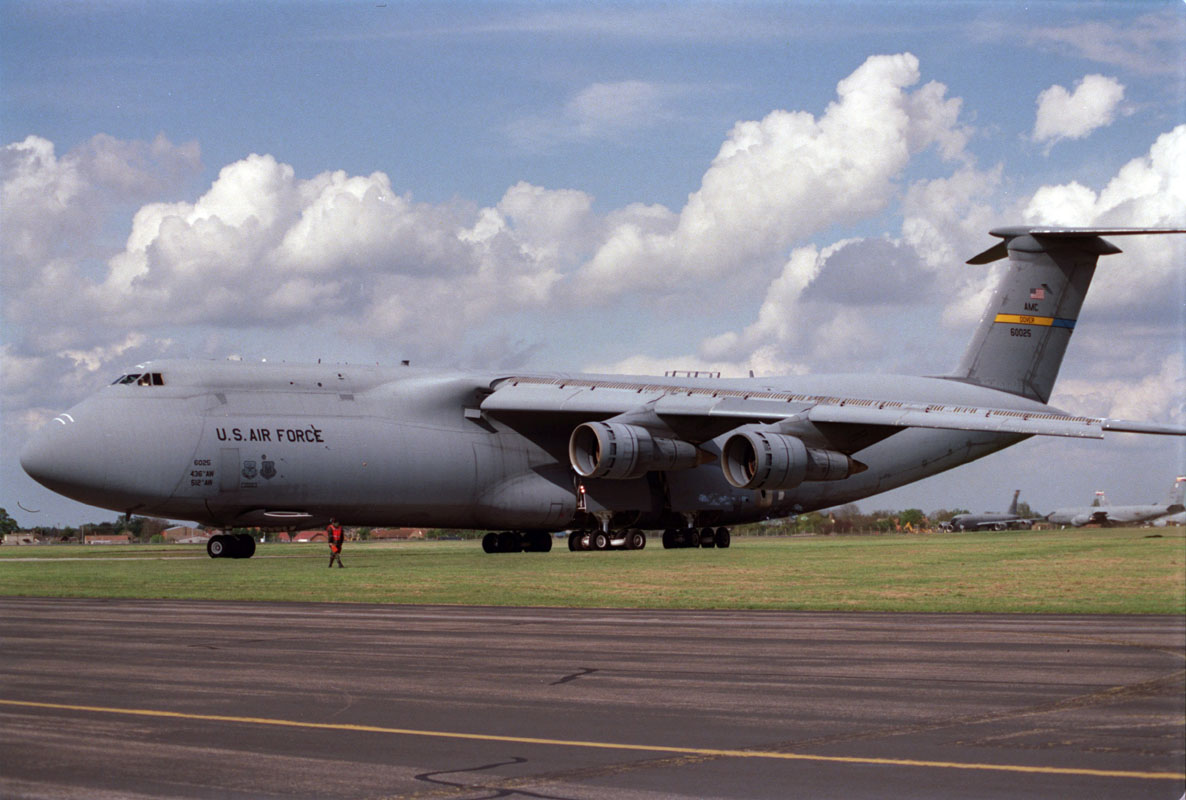I’ll never forget looking over to the right and seeing an airplane landing: we were going to be on a collision course with almost no way of stopping our aircraft
Imagine you’re at a stop light.
Your light is red, the crossing traffic is green, and brakes stop working.
How else can you stop the car? You don’t have a whole lot of time to think about it!
As told by Tecg Sgt. Nathan Rivard, 512th Airlift Wing in his article Reserve aircrew prevents aircraft collision, this was the scenario explained by Lt. Col. James Mann, a C-5M Super Galaxy pilot with the 709th Airlift Squadron (AS), and his crew, when they were in Minneapolis returning home to Dover Air Force Base (AFB), Delaware, after completing an airlift mission last year.
The only difference is, instead of an automobile on the road with other cars, it was a massive C-5M and on a taxiway with other aircraft.
“Everything started out normally,” said Mann. “We started the engines, taxied out and we were told to hold short of an active runway because airplanes were landing and taking off right in front of us. I set the parking brake and then almost immediately, the engineer reported we were losing hydraulic system number four.”
The C-5M has built-in redundancies, such as when one brake system fails, the pilots can select another and continue their mission. Mann told the co-pilot to swap to the alternate brakes, but the engineer reported they were losing that brake system as well. Their last chance was using emergency brakes. Those also failed.

Mann said they were drifting onto an active runway.
At a smaller airport, this may not have been a problem, but Minneapolis-Saint Paul International Airport, Minnesota, has more than 400,000 landings and takeoffs a year or approximately 1,095 a day, according to the airport’s website.
“I’ll never forget looking over to the right and seeing an airplane landing,” said Mann. “We were going to be on a collision course with almost no way of stopping the airplane.”
Mann said he reacted by pulling the thrust reversers to full blast, stopping the C-5’s movement forward. He was then able to back up the airplane, stopping a potential collision with a commercial airliner.
His quick thinking got the crew and their aircraft off the active runway. Once to safety, they needed to make sure the aircraft stayed in place.
“We chocked the nose landing gear,” said Mann. “As soon as I went back to forward thrust to shut down the engines, the airplane popped over the chocks, and it was rolling back out on the runway.”
The aircraft was empty because the aircrew’s mission was to bring National Guard members to Minneapolis after their mission in England. The chocks could not hold back the light aircraft with powerful C-5M engines.

“I put it in reverse thrust and backed up again,” said Mann. “I shut [the engines] down one at a time. I would bring number one to forward thrust and shut it down while I kept the other three in reverse. And once I brought that down, I did the same with number four.”
Mann said he and the crew continued this until all engines were shut down, the wheels were chocked, and the aircraft was stabilized in a safe location. The crew then searched for the malfunction.
“It was a hydraulic line that severed,” said Master Sgt. Troy Heller, a flight engineer evaluator, and instructor with the 709th AS. “A hydraulic fuse is supposed to set if it detects a leak and stops the leak. Unfortunately, this leak occurred before the fuse, so every time we selected a brake system, the hydraulic fluid just poured out.”
The brake systems run through one section inside the anti-skid manifold, said Heller. If the hydraulic line break was a bit lower, the fuse would have activated and stopped the leak, but it happened too high, which caused the brakes to fail.
Once the crew found the malfunction, they started to correct the problem.
“The crew chiefs got permission to tap that line that was severed,” said Heller. “Each hydraulic system contains several gallons of hydraulic fluid and 12 gallons in a reservoir, but that doesn’t include all the fluid that goes out throughout all the numerous feet of hydraulic lines that goes throughout the airplane.”
At more than 247 feet long, the C-5M Super Galaxy has a lot of hydraulic line to fill.

“We typically stock 48 gallons of hydraulic fluid on the airplane and that was not enough to fill up one system, said Heller. “We were able to scrounge up another case from the Guard and Reserve units in Minneapolis, and that was enough to fill one system, so we could move the plane.”
Replenishing the one system allowed the crew to establish working brakes and finalize their journey off the taxiway.
Quick thinking saved the crew from potential disaster.
“It’s a case where [how] knowing your systems can save your life, knowing how it works because there was no plan for that,” said Mann. “The more you know your systems, the better off we are.”
Following the incident, the crew filed an Aviation Safety Action Program report allowing the crew to share their experience and help other aircrews.
“We create accident reports to learn from it and become better Airmen from it,” said Heller. “There is no procedure for total loss of brakes in our aircraft flight training. Hopefully other crews can learn from this and know procedures to act on.”
The crew is scheduled to be formally awarded the Air Force Reserve Command Aircrew of Distinction Award in March.

Photo by Sue Sapp, Tech. Sgt. Brad Fallin, Tech. Sgt. Nathan Rivard, Lt. Col. Thomas Davis, and Senior Airman Delia A. Castillo / U.S. Air Force

